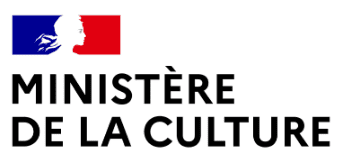Teresa Silva
Enjoy the Weather as a choreographic research run by Teresa Silva, the Portuguese choreographer and dancer, during a residency in Marseille (at Montevideo). Today it is a film which exemplifies what can be achieved through the unique combination of moving image and moving body arts. The starting point is a reading of The Life of Plants by Emanuele Coccia. The philosopher adopts the point of view of plants to devise a new understanding of the world as a living system linking all beings – animate and inanimate. This hypothesis is embodied in a succession of tableaux in which four dancers lend their gestures to new relationships with image and sound. A red thread weaves a web between bodies with a floating presence, in a courtyard swept by gusts of wind. Four voices, voice-overs but in situ, take turns to read a strange ecological fairytale, in which the narrative unravels a hodgepodge of non-human beings interacting with the seasons and variations in the weather. On screen, two men and two women wander through the space, moving their arms hypnotically, as if their movements are reeling the invisible thread of the story in and out. In the next tableau, hands mirror their gestures to animate a still life. Fluctuations in superimposed images, variations in shadow and colour filters: infinite artistic variations affect the bodies and disturb their relationship to space. « School could be everything. Everything could be the school”, so began the tale. What is offered here to our astonished senses is nothing less than a utopian dream of universal teaching. (Cyril Neyrat)
- CNAP Award | CNAP Award | French Competition
- 2022
-
 CNAP Award
CNAP Award
-
 CNAP Award
CNAP Award
-
 French Competition
French Competition
- 2022
ENJOY THE WEATHER: THE FILM
Teresa Silva
Interview with Teresa Silva
You are a choreographer and dancer. What is the origin of Enjoy the weather: the film, your first production, where film and dance come together to experiment with new forms and visions?
Enjoy the weather: the film is one of the outcomes of a dance research project, in which I proposed to collaborate with the artists David Marques, Jean-Baptiste Veyret-Logerias, Sabine Macher, Mestre André and Diogo Brito. This project was triggered by the book The Life of Plants by the philosopher Emanuele Coccia, in which he adopts the point of view of plants to understand the world as a space of metaphysical interaction, where all living beings share the same breath. Coccia talks about how plants are in continuous exposure and communication with the world, and how, for plants, to be in the world is to create the world, at the same time. Reading this, I kept on making connections with my experience in dance: how to dance is to be porous to the environment around and to be in relation with all there is. Another intention of the project was to give visibility to experimentation and research as a source of artistic fruition and knowledge production. That is why this film moves between the exploratory dimension of a creative process and the performative dimension, situating itself on the border between documentary and fiction. I was also interested in conceiving and revealing the research as an ecosystem, a common body, which results from a set of relationships, affectations and inter-human and beyond-human interactions.
What is your conception of dance and movement and how did it develop in this film with your dancers?
I see dance as an entity transcending the physical bodies. In this sense my work is about placing the attention and the sensitivity in the movement that exists in, through and beyond the physical bodies. Dance exists as a manifestation, as a way of giving visibility to already existing relationships. Like this, dance is a medium between the visible and the invisible, between the conscious and the unconscious, between the self and others, that amplifies what a body alone can do. Sharing this conception with the performers allows us to notice how we move and how we are being moved reciprocally and continuously by others and the environment. The practices that we do in the film become a way to perceive and act on an interconnected, impermanent and interdependent world.
Enjoy the weather: the film is divided into several sequences, several rituals or “practices”. How did you imagine these choreographs and how important were they?
Since the beginning I have imagined to expose the studio, the research itself, to invite whoever is watching to see the performers exploring, investigating, sensing, trying out. And we see them in the present of the experience, with their spontaneous reactions and hesitations. On the other hand, I wanted to give prominence to what connects us such as air, climate, time, landscape and sound. In trying to sense and approach these elements, the artistic team developed several practices of perception, attention, listening, voice and movement, with the intention of revealing interdependence, circulation, exchange, interaction, cooperation and co-responsibility.
The image is always treated with shadow or color filters where the dancers in superimposition are often on the verge of disappearing. Why this specific treatment?
The film is constructed from the superposition of layers of image, as a way of experiencing the human appearance and disappearance in relationship with the environment. This treatment is another layer created by the performers by their direct action on the image by moving and manipulating light filters and objects. For me it gives a climatic dimension and unveils other narratives in the relationship between bodies and environment.
As for the sound, the voices are superimposed in several layers also with sounds of nature. How did you conceive it?
The sounds that compose the soundscape were collected during the research residencies. They are recordings of our practices, time together and of the environments we were in, nature but also cities. The soundscape, also composed in layers, by Sabine Macher, reinforces the fusion of temporalities and places. It is conceived to have its own autonomy, meeting the image, instead of sustaining it, emphasizing the proliferation of readings in the relationship between image and sound. The soundscape is also nurtured by the experiences we shared with Mestre André, a Portuguese sound artist that is part of the team.
What is the source of “The story of the school” narrated in multiple voices and what significance does it have?
“The story of the school” comes from an exercise of collaboration and co-imagination. It was created by David, Jean-Baptiste, Sabine and I, by accumulation, like a cadavre exquis. We were weaving with a common thread, always adding to what had just been said before. Then we compressed and edited the material. The story is an invitation to think with other perspectives, to multiply voices and to use fiction and fabulation to affectionately intertwine human and beyond human. At the heart of it stands the hypothesis that we can learn from everyone and everything.
“Enjoy the weather” is the credo of the film and its title. How to interpret this invitation?
To answer your question, I would like to propose a quote by Daniel Blanga-Gubbay’s essay Talking about the weather: « The weather is not only the possibility of a connection, but the impossibility of an isolation. » And I would add that the title is also an invitation to notice constant change and unpredictability. Those are characteristic of the weather, but they can be applied to each one of us and to all the things around us. And last not least, enjoy the weather means: enjoy what’s happening.
Propos recueillis par Olivier Pierre
-
 CNAP Award
CNAP Award
-
 CNAP Award
CNAP Award
-
 French Competition
French Competition
Technical sheet
Portugal, France / 2022 / Color / 32’
Original version : english, french
Subtitles : english, french, portuguese
Script : Teresa Silva, David Marques, Jean-Baptiste Veyret-Logerias, Sabine Macher
Photography : Teresa Silva
Editing : Teresa Silva, David Marques, Sabine Macher
Sound : Sabine Macher
With : Teresa Silva, David Marques, Jean-Baptiste Veyret-Logerias, Sabine Macher
Production : Vítor Alves Brotas (Agência 25), Lou Colombani (Parallèle – Festival International des Pratiques Émergentes)
Distribution : Teresa Silva, Vítor Alves Brotas (Agência 25)
- Autres films / CNAP Award, French Competition






